Delivering Customer Service Excellence: A Case Study on Strategy Box’s Blended Approach
Introduction
In today’s competitive business landscape, delivering exceptional customer service has become a vital differentiator for organisations striving to establish long-term success. This case study explores how Strategy Box, a leading consulting firm, partnered with Client A to enhance their service excellence through a blended approach of client and internal team interviews, followed by a facilitated session utilising their own design thinking framework. By focusing on specific objectives and leveraging collaborative brainstorming, Strategy Box aimed to empower Client A to elevate their customer service to new heights.
The Challenge
Client A, a prominent player in their industry, recognised the importance of customer service excellence as a key driver of customer satisfaction, loyalty, and business growth. They sought to take their customer service to the next level by identifying opportunities for improvement and developing a comprehensive action plan. With this very specific objective in mind, Client A engaged Strategy Box to guide them through the process and deliver measurable results.
The Solution
Strategy Box’s approach began by conducting in-depth interviews with both Client A’s clients and their internal team members. These interviews provided valuable insights into the current state of their customer service, identifying pain points, challenges, and areas for improvement. By gathering perspectives from both sides, Strategy Box gained a comprehensive understanding of the customer experience landscape within Client A’s organisation.
Armed with the insights from the interviews, Strategy Box organised a facilitated session involving key stakeholders from Client A’s team. Employing their own design thinking framework, the session was structured to foster collaboration, creativity, and innovation. The framework facilitated the exploration of the identified opportunities and encouraged participants to generate ideas, solutions, and strategies.
Throughout the brainstorming session, Strategy Box guided the team through a series of exercises that helped them think beyond conventional boundaries, challenging assumptions and unlocking untapped potential. The focus was not only on immediate improvements but also on long-term transformational changes that would solidify Client A’s position as a provider of exceptional customer service.
The Results
The blended approach employed by Strategy Box proved instrumental in empowering Client A to deliver service excellence consistently. The collaborative efforts of the client’s internal team, guided by Strategy Box’s expertise, culminated in a comprehensive action plan tailored to their specific needs and goals.
The results achieved by Client A were significant and tangible. The action plan addressed the identified opportunities head-on, leveraging innovative strategies and best practices. It encompassed enhancements in various aspects of the customer journey, including communication channels, response time, personalised interactions, and streamlined processes.
As a result of implementing the action plan, Client A experienced a marked improvement in customer satisfaction scores, increased customer loyalty, and a rise in positive customer feedback. The organisation’s reputation as a provider of outstanding customer service became a driving force behind their continued success.
Furthermore, the collaborative approach fostered a sense of ownership and empowerment among Client A’s internal team members. They embraced the culture of customer-centricity and actively contributed to the ongoing refinement of their customer service strategies. This newfound enthusiasm and dedication significantly boosted employee morale and engagement.
Conclusion
Through their blended approach of interviewing clients and internal team members, followed by a facilitated session utilising design thinking, Strategy Box successfully assisted Client A in delivering customer service excellence on a consistent basis. By identifying opportunities, generating innovative ideas, and developing a tailored action plan, Strategy Box empowered Client A to enhance their customer service offerings and exceed customer expectations.
Client A’s commitment to service excellence, combined with Strategy Box’s expertise, resulted in a significant transformation of their customer service landscape. By embracing a customer-centric mindset and implementing the action plan, Client A solidified their reputation as a leader in their industry, fostering customer loyalty and driving sustainable business growth.

“Great off site-day today on further developing client service excellence by the Heneghan team, facilitated by Jennifer Kelly of StrategyBox. And delighted our board member and former Taoiseach Enda Kenny could join a dynamic and productive event. “
– Nigel Heneghan, Managing Director at Heneghan Strategic Communications


